Joseph Hartman’s photographs at the Stephen Bulger Gallery do what all good photographs do. They draw you closer and, in so doing, expose much more of their subject than can be seen with the unaided eye. The series, part of an ongoing project culminating in a 2017 sesquicentennial solo show at the Art Gallery of Hamilton and a monograph by Black Dog Publishing, consists of ten large-scale colour photographs of the interior of artists’ studios. Using a large format camera and a deep depth of field, Hartman has captured his subject in the type of razor sharp detail characteristic of photographers like Edward Burtynsky, under whom Hartman apprenticed after opting out of a medical career to pursue photography in the early 2000s. And while Hartman’s subject matter is often also similar to Burtynsky’s—think industrial landscapes, processes of decay, and nature meets built environment—for this project, Hartman has turned his omniscient, outward-looking eye to the private, often elusive, interiority of the artist’s space. The result is a deceivingly subtle questioning of both the truth-telling capacity of photography and of the ability of artists’ studios and other details of artists’ lives to provide insight into their artistic processes or the meaning of their art.
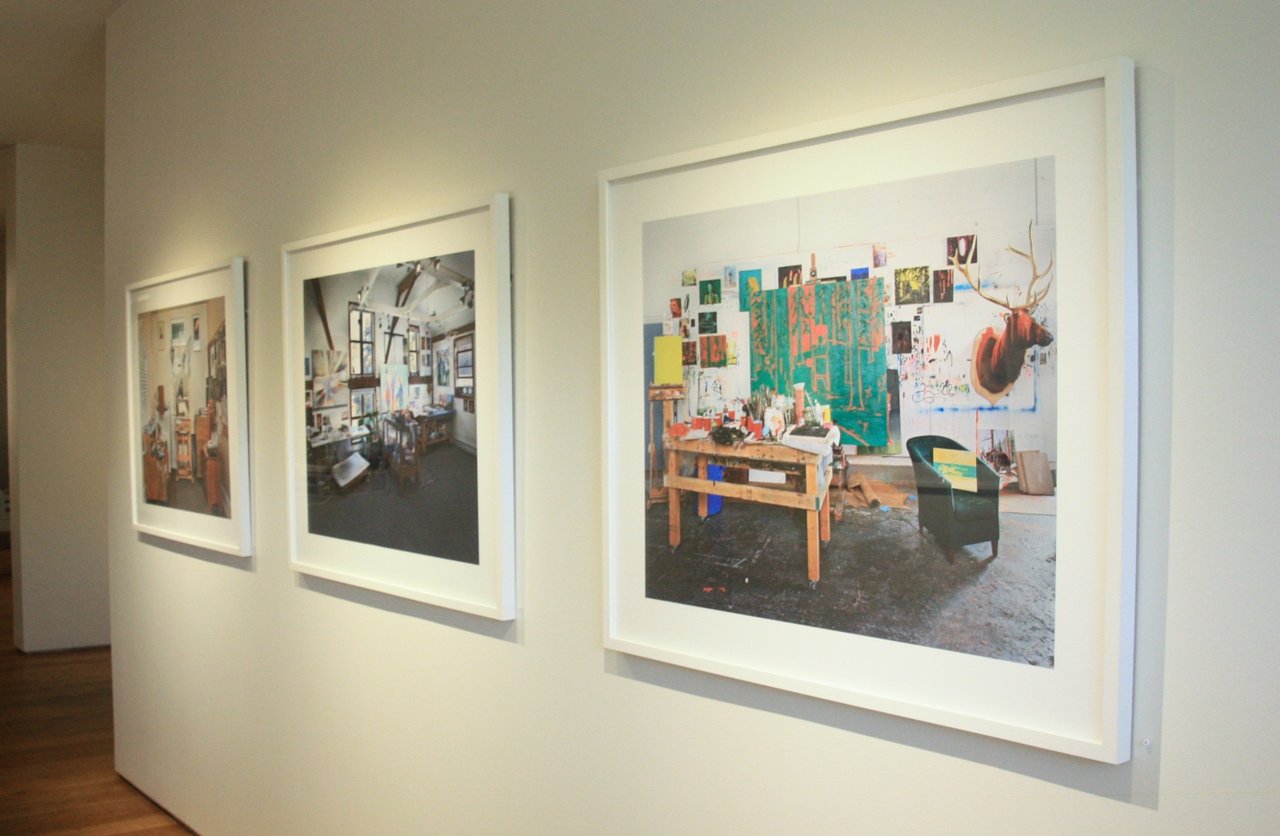 Installation view with Josph Hartman, Kim Dorland (right). Photo: Catherine MacArthur Falls
Installation view with Josph Hartman, Kim Dorland (right). Photo: Catherine MacArthur Falls
To create Artist Studios, Hartman selected his artists very carefully. His primary criterion, that each of the studios belong to an active Canadian artist, follows from his previous photographic work, which tends to take a specifically Canadian, primarily Ontarian, focus. Yet, as Hartman stated in email correspondence, he also chose artists whose work he finds personally interesting, for whom “something about their artwork will create an interesting studio space,” and in which “the creation and ‘fabrication’ of the artwork…happen[s] in the studio.” These criteria led Hartman to an eclectic mix of some of Canada’s leading painters and sculptors: Kent Monkman, John Scott, Kim Dorland, Douglas Walker, and Katharine Harvey, to name just a few. Once selected for the project, each studio was photographed without the artist or other inhabitants. As much as possible, Hartman aims to capture the studios in what he calls their “‘natural’ working state,” absent of any preparatory cleaning or manipulation. He also attempts to photograph works in progress, and asks participating artists to be working on a piece when he is there, if possible. “I try to avoid the posed photo at all costs as I find them fairly boring,” Hartman relates. “I really want to represent a realistic scenario and not something posed simply for the photo.” Indeed, in the few cases where Hartman arrived to find what he thought to be an unrealistic setting—a situation he said was more common in the early stages of the project—he would ask the artist if he could come back when the studio had not been clean or otherwise staged.
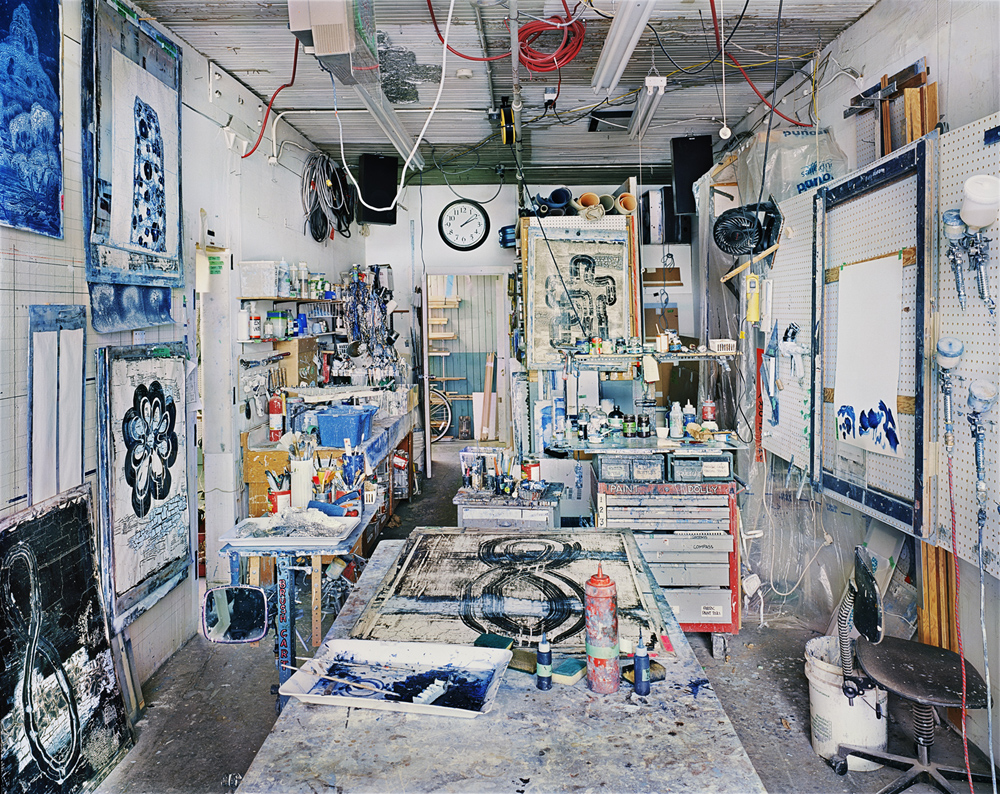 Douglas Walker, 2013 © Joseph Hartman, Courtesy of Stephen Bulger Gallery
Douglas Walker, 2013 © Joseph Hartman, Courtesy of Stephen Bulger Gallery
The resulting photographs—sparkling with visual multeity—reflect the eclecticism of their owners, allowing viewers a glimpse into studios that range from sparse and meticulous (William Fisk, for example) to frenziedly cluttered (John Scott and Douglas Walker, for instance). One can expect to see industrial lofts stacked with oversized canvases and paint-splattered surfaces, as well as perhaps less anticipated minimalist, meditative spaces and homey, even quaint, furnishings. The effect of these images on the viewer is powerfully seductive. By excluding the artist or any other inhabitant from the image, Hartman creates the feeling of a privileged all-access pass to a coveted intimate space. Captured in crisp detail, on such a large scale, the studios are ripe for prolonged, unencumbered looking. The eye is free to linger over artists’ works in progress, influences and ideas, even hints of a life beyond the studio—an unfinished painting in Monkman, for instance, books scattered on tables in James Lahey, notes, doodles and sketches, abandoned or unfinished ideas, a pair of hockey skates. By capturing the studios, as much as is possible, in the middle of the artistic process, Hartman’s photographs also give the sense that the artist was just there, that she is just beyond the frame, having put down brush or pencil to step back for a better look, get some air, or grab something in another room. Details like the brushes left in paint cans in John Scott, or a sketchbook left open on a chair in Shelley Adler help create this feeling of suspension.
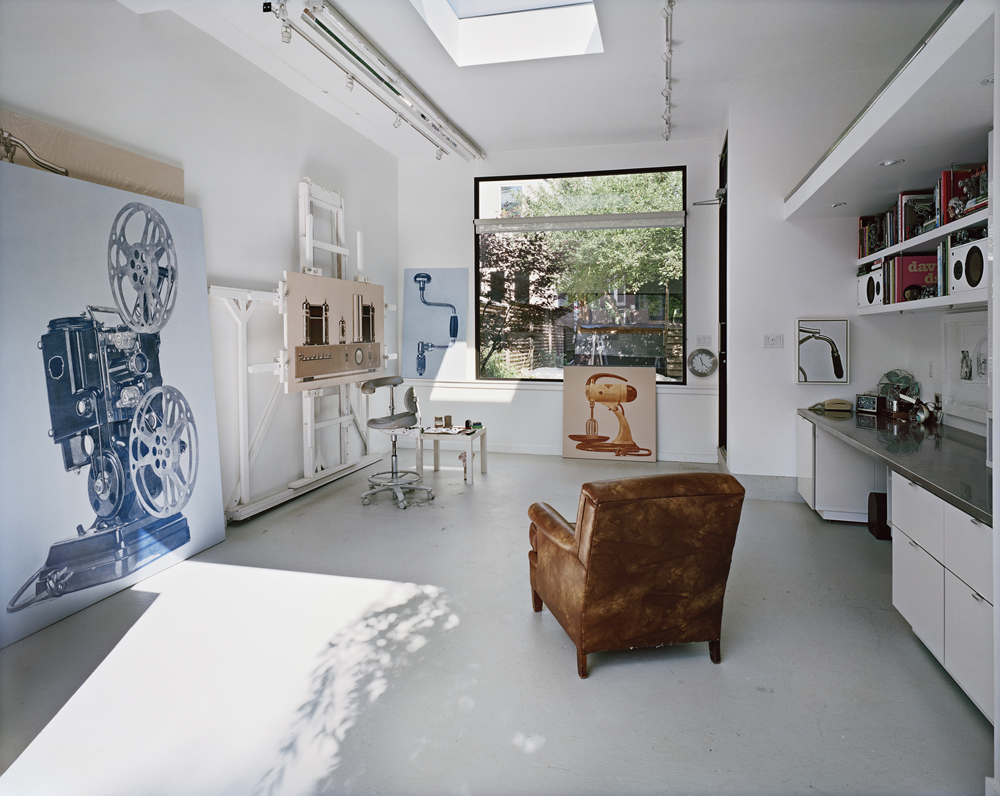 William Fisk, 2014 © Joseph Hartman, Courtesy of Stephen Bulger Gallery
William Fisk, 2014 © Joseph Hartman, Courtesy of Stephen Bulger Gallery
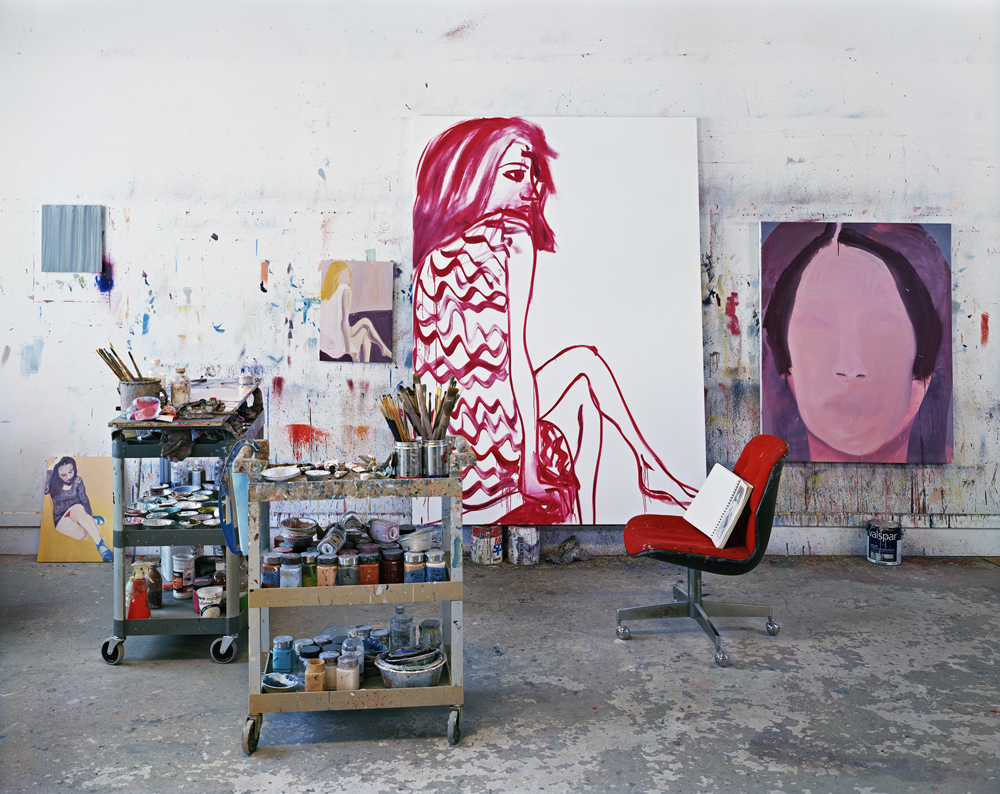 Shelley Adler, 2013 © Joseph Hartman, Courtesy of Stephen Bulger Gallery
Shelley Adler, 2013 © Joseph Hartman, Courtesy of Stephen Bulger Gallery
This detailed, suspended aesthetic works on the viewer in a number of ways. At the surface level, it both indulges and exposes our fascination with the minutiae of artists’ lives, a fascination also evident in the countless artists’ biographies, studio tours, interviews, and portraits that attempt to understand a figure granted an auratic and genius-laden place in Western society. Yet, by capturing works-in-progress, it also creates an illusion of access to the mysterious methods, manners of thinking, and processes from which the artist turns nothing into something, to the creative spaces—physically and mentally—in which artmaking occurs. According to Hartman, this is the space he set out to access when he began shooting the series. And in some cases, this is exactly what we see. In Charles Bierk, as Hartman points out, you do gain significant insight into the artist’s process: the gridded photograph taped to his easel hints at how Bierk creates large-scale hyperrealistic portraits one minute square at a time. Similarly, Hartman notes, the corkboard in Michael Thompson’s studio tells us something of his visual influences and inspirations.
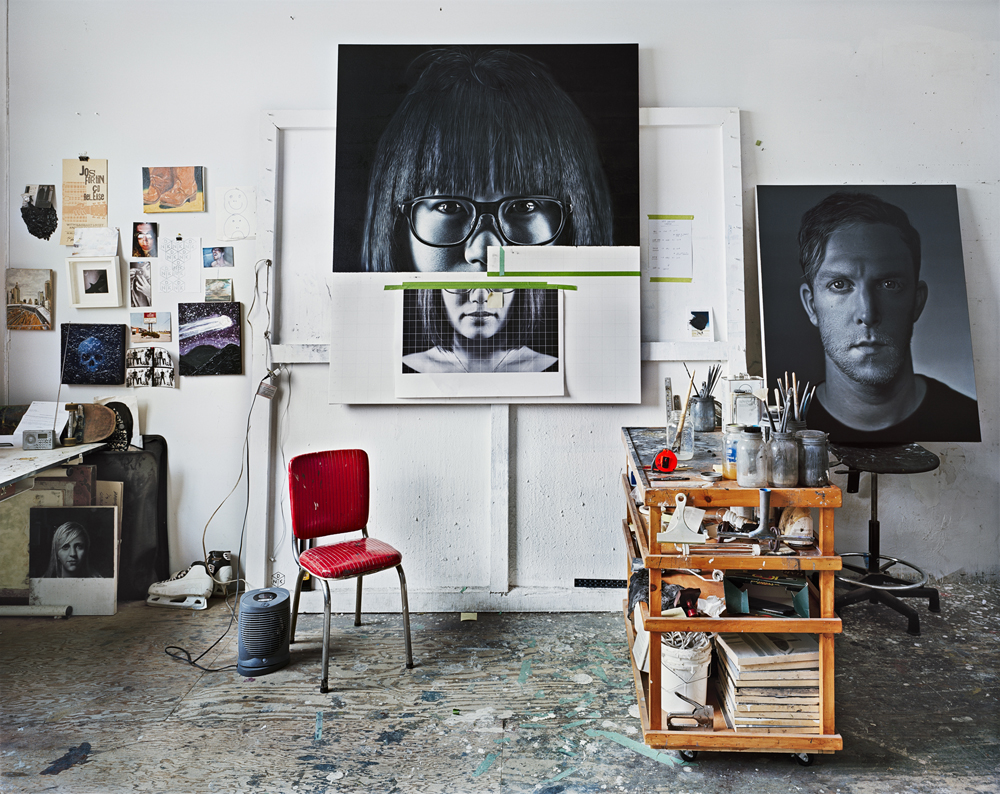 Charles Bierk, 2013 © Joseph Hartman, Courtesy of Stephen Bulger Gallery
Charles Bierk, 2013 © Joseph Hartman, Courtesy of Stephen Bulger Gallery
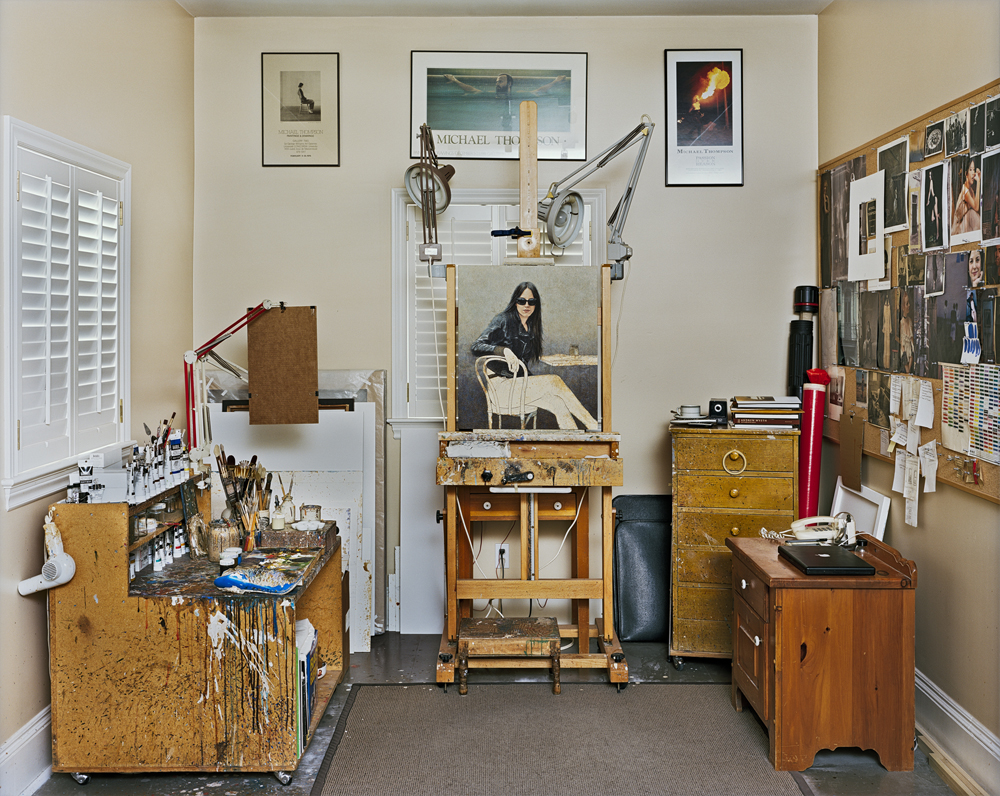 Michael Thompson, 2013 © Joseph Hartman, Courtesy of Stephen Bulger Gallery
Michael Thompson, 2013 © Joseph Hartman, Courtesy of Stephen Bulger Gallery
This feeling of an unencumbered glimpse into the artist’s life and process is aided, of course, by our belief in the ‘truthfulness’ of photography, a belief that, though debunked for several decades now, continues to hold visceral sway. When looking at one of Hartman’s photographs—in all its hyperrealistic detail—we do feel that we are glimpsing the reality of the artist’s life, that even though the artist is absent, the work constitutes a portrait of the artist and her creative process. And yet, it is here—at the intersection of photography as a medium and the studio as a subject—that the subtler meanings of the work come into play. Because, when really looking at Hartman’s photographs, it is difficult to lose oneself completely to the ‘reality’ of the studios shown. It is simply too difficult to ignore the unnatural cleanliness of William Fisk’s space, the conspicuous visibility of one of Kent Monkman’s most readily identifiable works (Expelling the Vices, 2014) and, most disquietingly, the gun on the central table in James Lahey’s studio. Such details hint at a process of self-editing or control that bars the access we truly desire. Indeed, in even the most seemingly untouched or disheveled studios, we can never know how much the space diverges from its everyday aesthetic, how much the inhabiting artist, or Hartman himself, has framed or staged it—not necessarily maliciously or even consciously—to align with a persona or aesthetic or simply to play with the viewer.
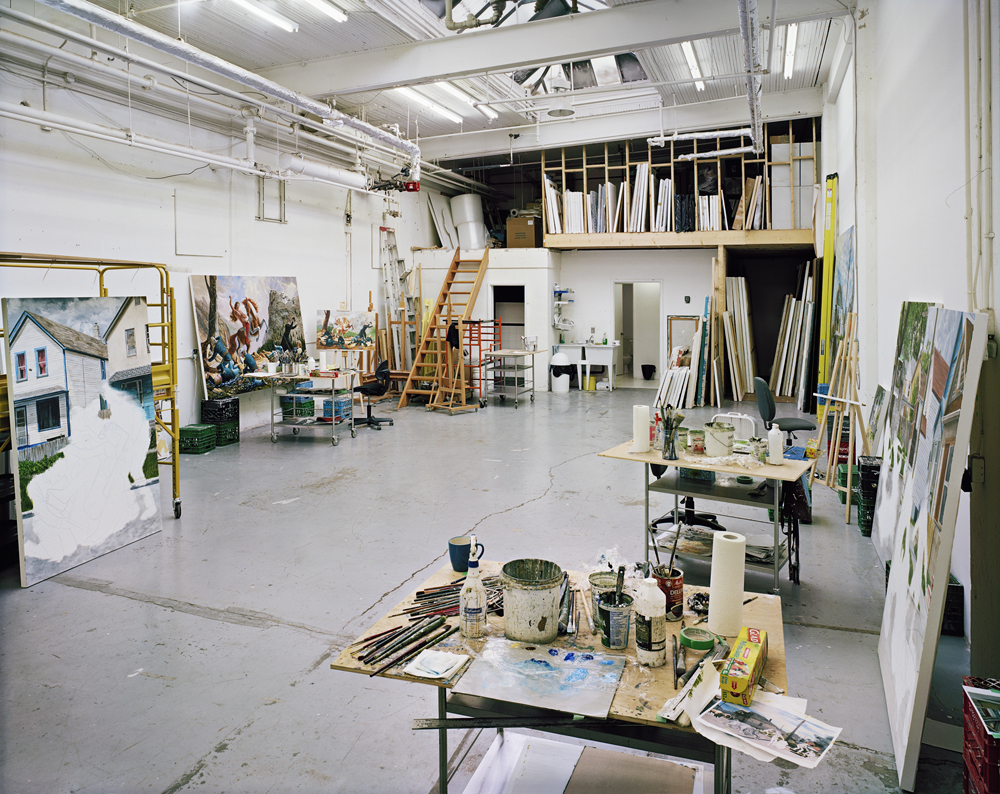 Kent Monkman, 2014 © Joseph Hartman, Courtesy of Stephen Bulger Gallery
Kent Monkman, 2014 © Joseph Hartman, Courtesy of Stephen Bulger Gallery
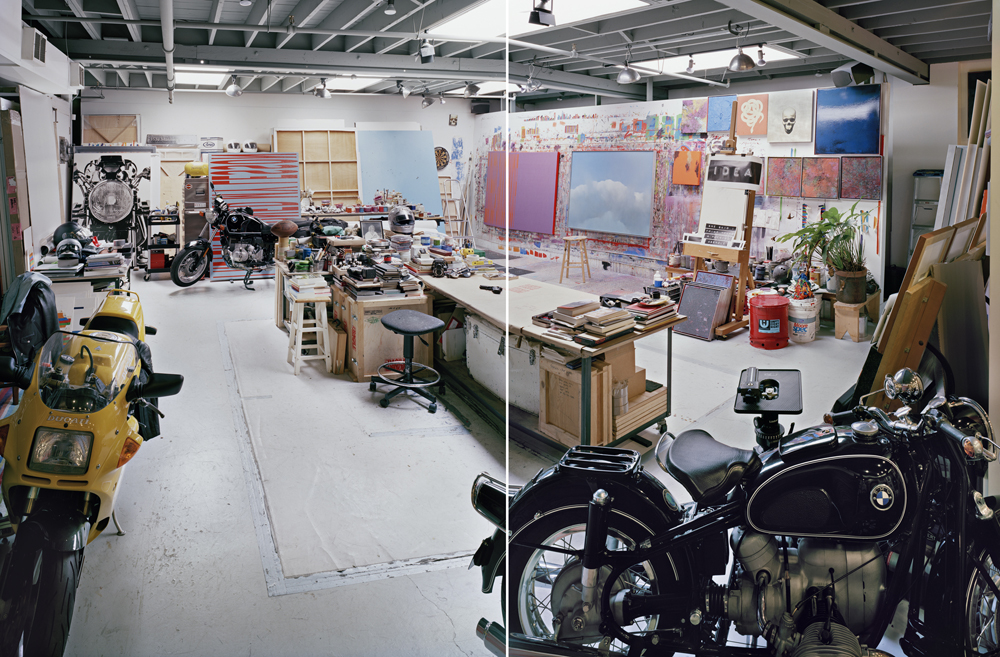 James Lahey, 2014 © Joseph Hartman, Courtesy of Stephen Bulger Gallery
James Lahey, 2014 © Joseph Hartman, Courtesy of Stephen Bulger Gallery
Throughout the history of art, the studio has been a place where real artistic work is performed. Yet, it has also acted as a signifier of a specific type of identity, mental process, and labour. This signifying potential of the studio is certainly not lost on artists, perhaps accounting for some of the artists’ impulse to clean up before letting Hartman in to photograph. In one or two cases, Hartman describes, artists he pursued even felt the space was, “too private and too personal to be photographed.” The truth is that studios are too meaning-laden to ever be truthful. The ‘real’ studio is simply too slippery to pin down. And in this way, the studio as a subject parallels photography as a medium. In one of his many successes with the series, Hartman has cleverly married photography, whose veracity we are used to questioning, with a subject we often do not, but whose ability to convey truth about artistic processes and meaning is, in the series, rendered dubious through the capturing of careful details. Subject and medium mutually reinforce one another—the studio, with all of its tricks, reminds us of the potential dishonesty of photography and vice versa. And in this process of mutual questioning, Joseph Hartman has created a beautiful and technically masterful series of photographs, one that not only reminds us of our near-obsession with artists and their creative processes, but that also raises questions, as all interesting art does, about how much we can actually uncover by peering—through a photograph or otherwise—into artists’ lives.
Catherine MacArthur Falls
*Exhibition information: September 19 – October 17, 2015, Stephen Bulger Gallery, 1026 Queen Street West, Toronto. Gallery hours: Tue – Sat, 11 – 6 p.m.
